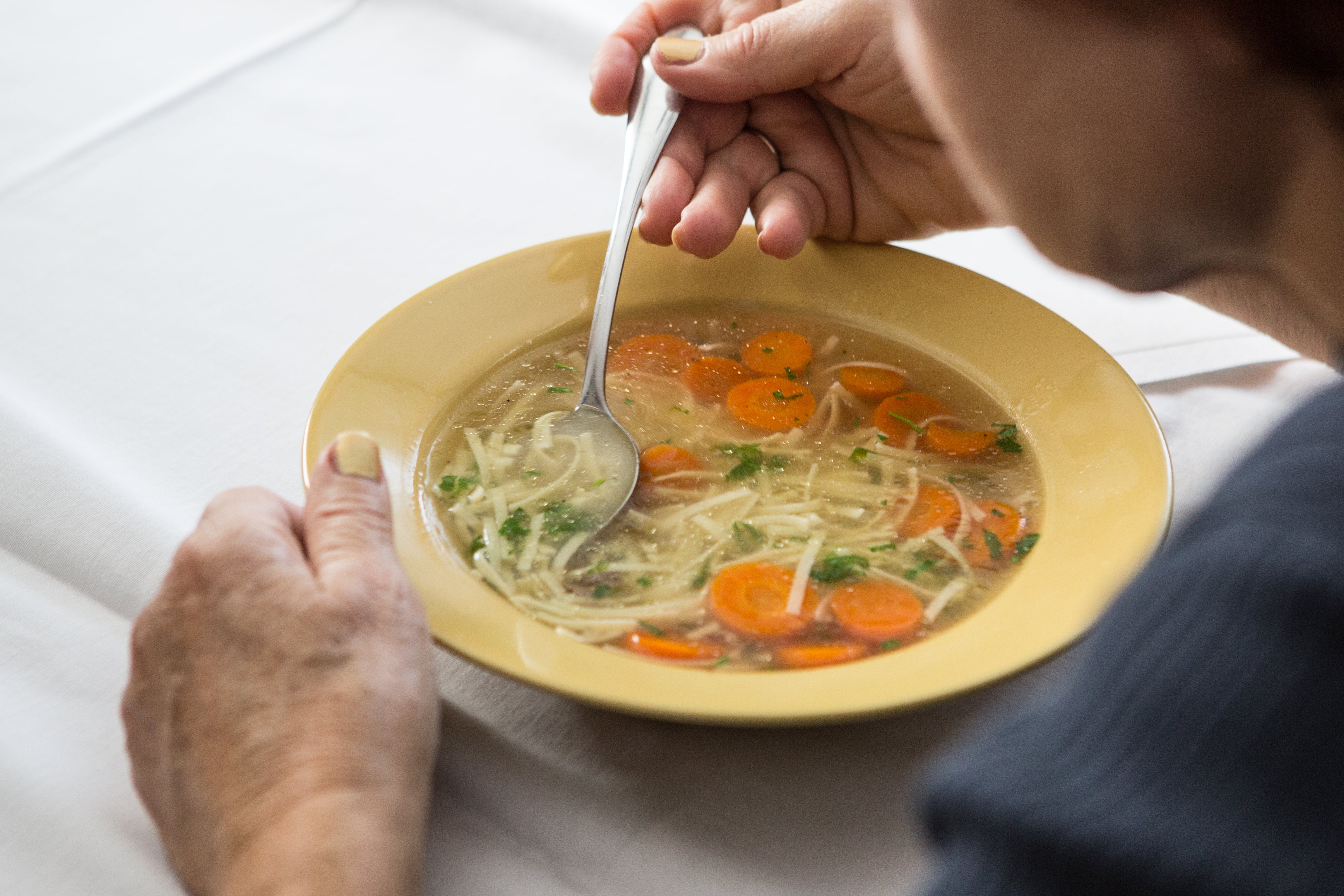As dementia begins to affect memory or coordination, mealtimes may feel different, but they can still be meaningful, calm, and nourishing. Here’s how you can gently support your loved one’s independence and make meals a moment of connection.
Keep it familiar and simple
Offer meals at a consistent time and place so they feel predictable, calming, and part of a comforting daily rhythm. In early-stage dementia, this familiarity can boost confidence and reduce unnecessary stress. Limit distractions by turning off the TV or radio, and clear away patterned tablecloths or clutter to keep focus on the meal and conversation rather than potential sources of confusion.
Use clear visuals
Choose plain, contrasting tableware to help food stand out and make it easier to recognize, especially if attention or visual processing is starting to change. A simple, uncluttered table setting can make the experience feel more relaxed and inviting.
Encourage participation with dignity
Invite them to join in small, achievable ways, such as setting utensils or buttering bread. Early on, these contributions help maintain a sense of independence and purpose. Give them time to complete these tasks without rushing, showing you value their role at the table.
Offer meals at a comfortable pace and portion
Serve straightforward meals with one or two food items at a time. This prevents overwhelm and keeps the choice simple. In early-stage dementia, utensils are often still manageable, so finger foods or cutting items into smaller pieces can be offered as a convenience rather than a necessity. Let them set their own pace, if possible plan so that meals don’t need to be hurried.
Guide gently, when needed
If a reminder is needed, demonstrate how to use utensils or show the motion of taking a bite. Light prompts or visual cues are usually enough at this stage, keeping assistance supportive rather than directive.
Keep it nourishing and safe
Choose foods with textures and temperatures that are easy and pleasant to eat. At this stage, most textures are still fine, but avoiding overly tough or dry foods can make meals more enjoyable and reduce effort. Softer items like cooked vegetables or moist proteins can be a good choice.
Sit together
Eating together provides both social connection and a natural model for the flow of the meal. In early stages, gentle companionship can help keep them engaged and make mealtimes feel like a shared, positive routine.




Partager:
How can I help my loved one stay hydrated?
Comment soutenir la prise de médicaments d’un proche vivant avec des troubles cognitifs